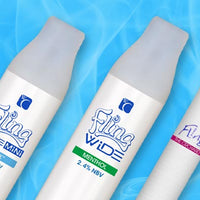Following a controversial study published in The New England Journal of Medicine, a 2015 Tech Times headline reads, “E-cigarettes Not Safer than Ordinary Cigarettes, Contains High Concentration of Formaldehyde.” The author goes on about the dangers of carcinogens released when cranking up an e-cig’s voltage to 5.0V. Of course, you’ll have to read to the end of the article to find out why advocacy groups claim this study is flawed.
The Truth About E-Cigs and Formaldehyde

As claims of e-cigs producing formaldehyde continue to surface, even highly reputable news organizations like NPR touted, “E-Cigarettes Can Churn Out High Levels Of Formaldehyde,” yet they wait until halfway down the page to note, “The e-cigarette industry immediately dismissed the findings, saying the measurements were made under unrealistic conditions.” The piece even mentions that the study’s lead author “acknowledges that he found no formaldehyde when the e-cigarettes were set at low levels.”
In his analysis of the findings, leading expert on e-cig research Dr. Konstantinos Farsalinos says that the formaldehyde detected in the study resulted from the atomizer overheating rather than the contents of e-liquids or the build of the device.
“Overheating results in an unpleasant taste that none can withstand,” he claims, which is a fact to which experienced vapers can certainly attest. Dr. Farsalinos concludes, “No vaper is ever using the e-cigarette at such conditions and, thus, will never be exposed to such levels of formaldehyde.”
Gregory Conley, a representative of the American Vaping Association, echoed Dr. Farsalinos by saying the researchers, “clearly did not talk to any vapers to understand this.” As a comparison, Conley explained to NPR, “I can take a steak and I can cook it on the grill for the next 18 hours, and that steak will be absolutely chock-full of carcinogens, but the steak will also be charcoal, so no one will eat it.”
The e-cig industry is no stranger to outlandish press. Policy maker and political pundits regularly claim flavored e-cigs intentionally attract children, yet alcohol brands offer a rainbow of fruity flavors, and no one accuses them of marketing to kids. People make blanket statements like “No one knows what is in e-cigarettes,” while reputable brands like White Cloud openly answer questions regarding what goes into their e-liquids and even hosted a recent webinar titled “The Low Down on E-Cigarette Flavors”, in which White Cloud Co-Founder Matthew Steingraber gave a breakdown of White Cloud’s e-liquid ingredients.
The fact is, White Cloud products cannot reach the level of heat simulated in the study, so under no circumstances could they produce formaldehyde. Even if they could, no one would be able to inhale vapor at such high temperatures.
Sensationalist headlines may generate clicks and page views, but they do a disservice to society by scaring people away from a potentially safer alternative to tobacco. White Cloud stands committed to ensuring everything we sell is safe. We hope media reports about e-cigs will eventually catch up with reality, but the odds are low as long as medical journals continue promoting junk science to smear the industry.






